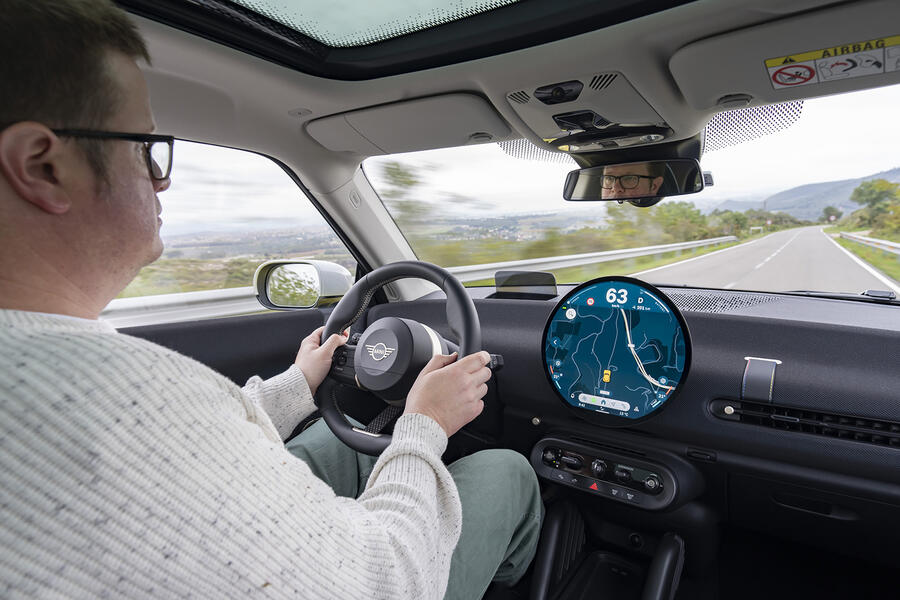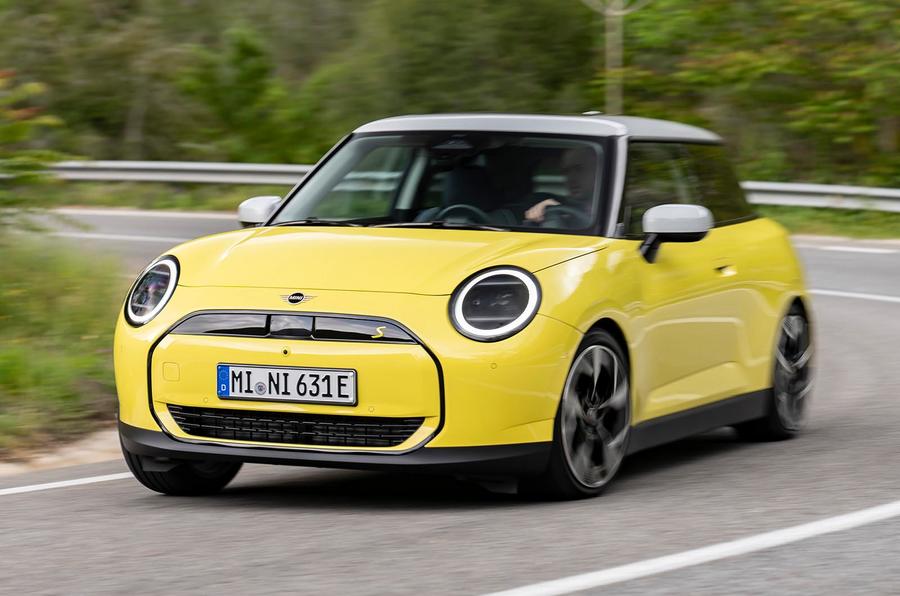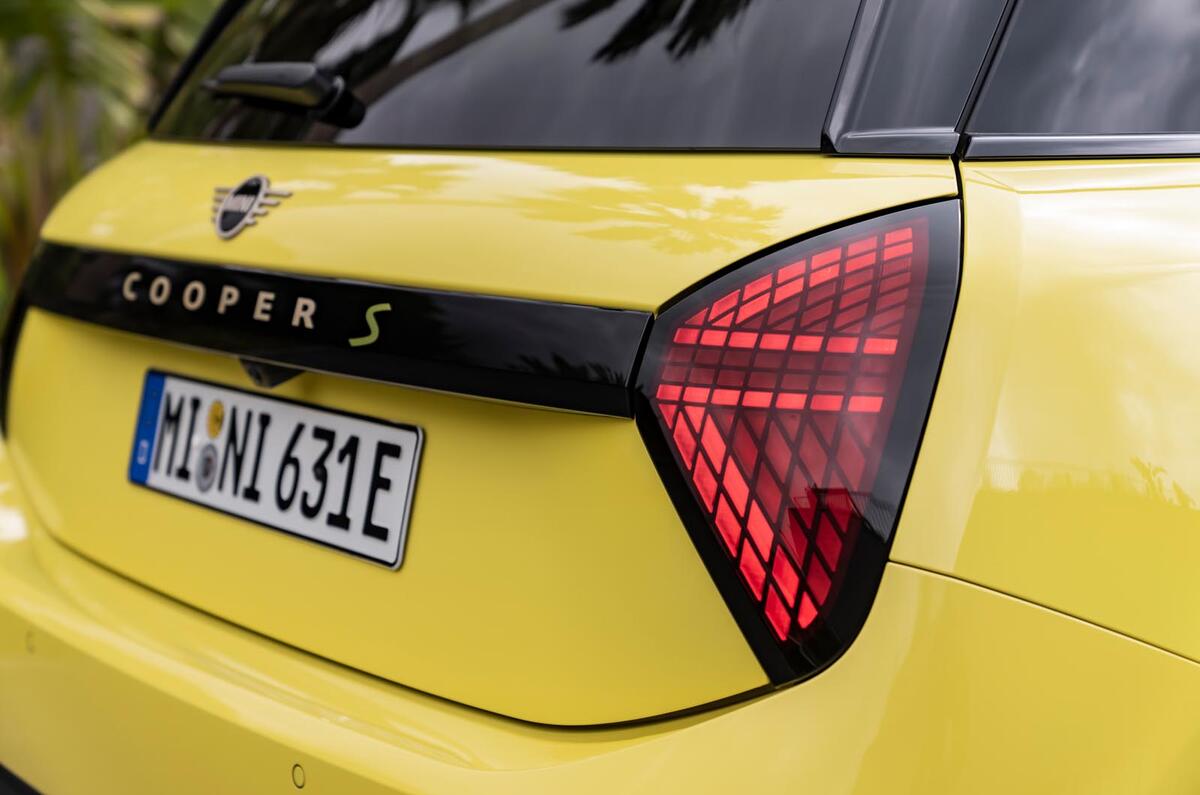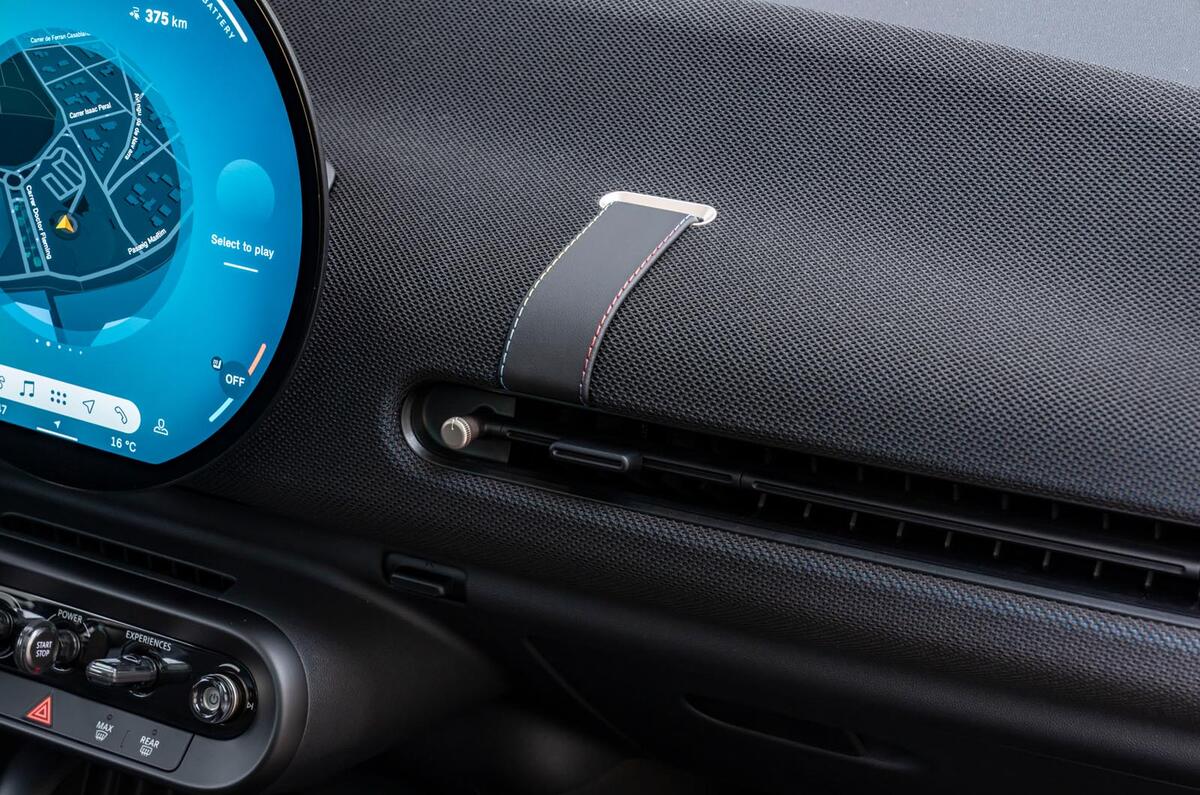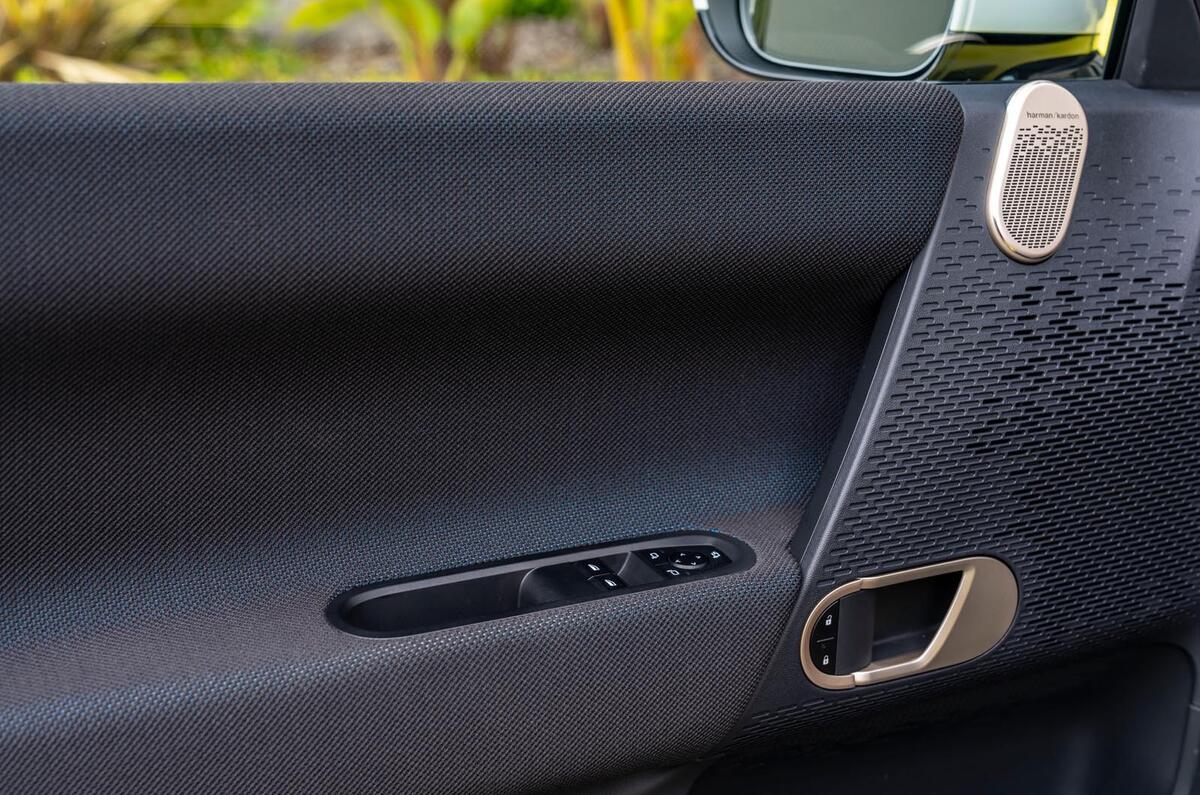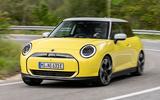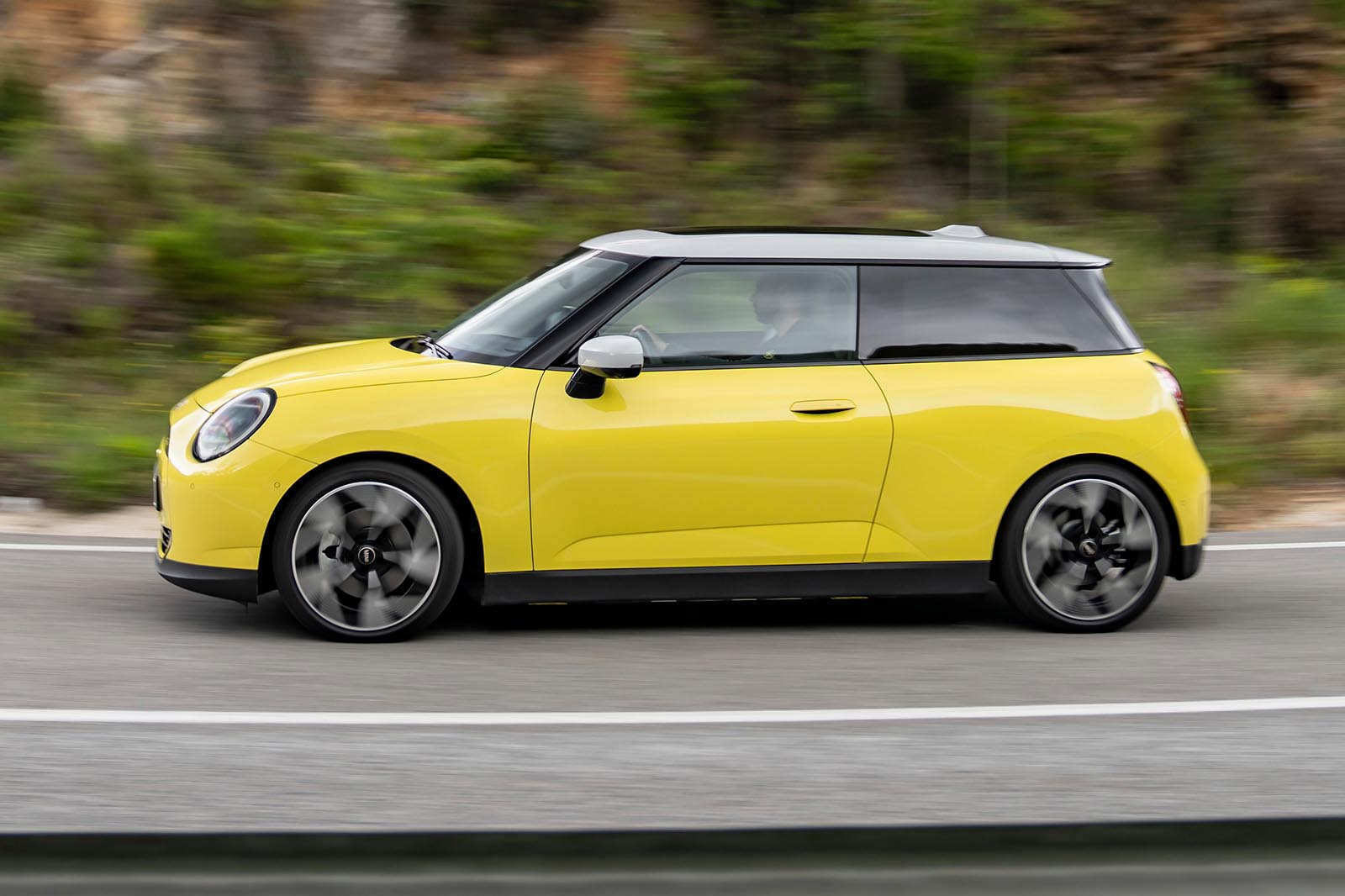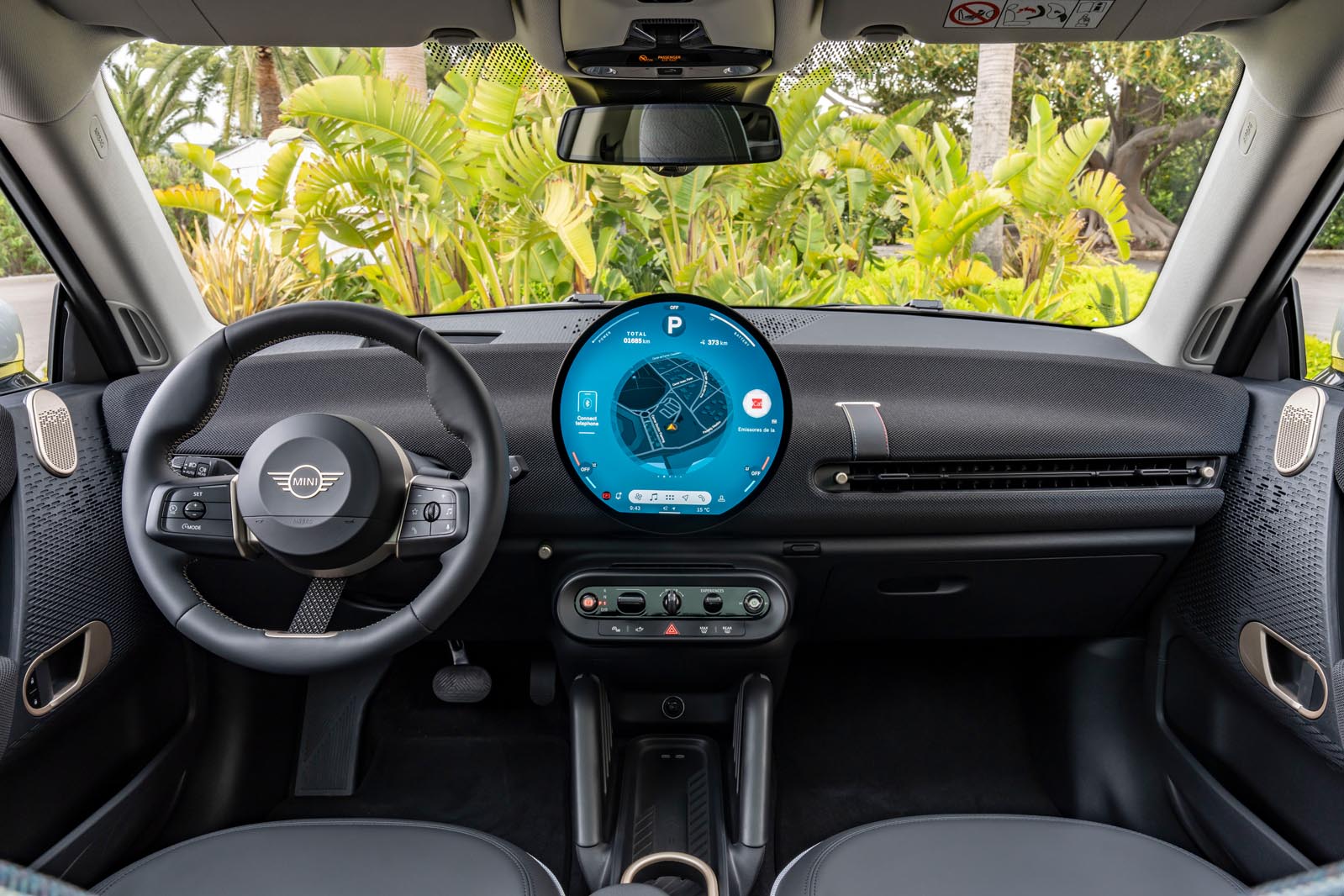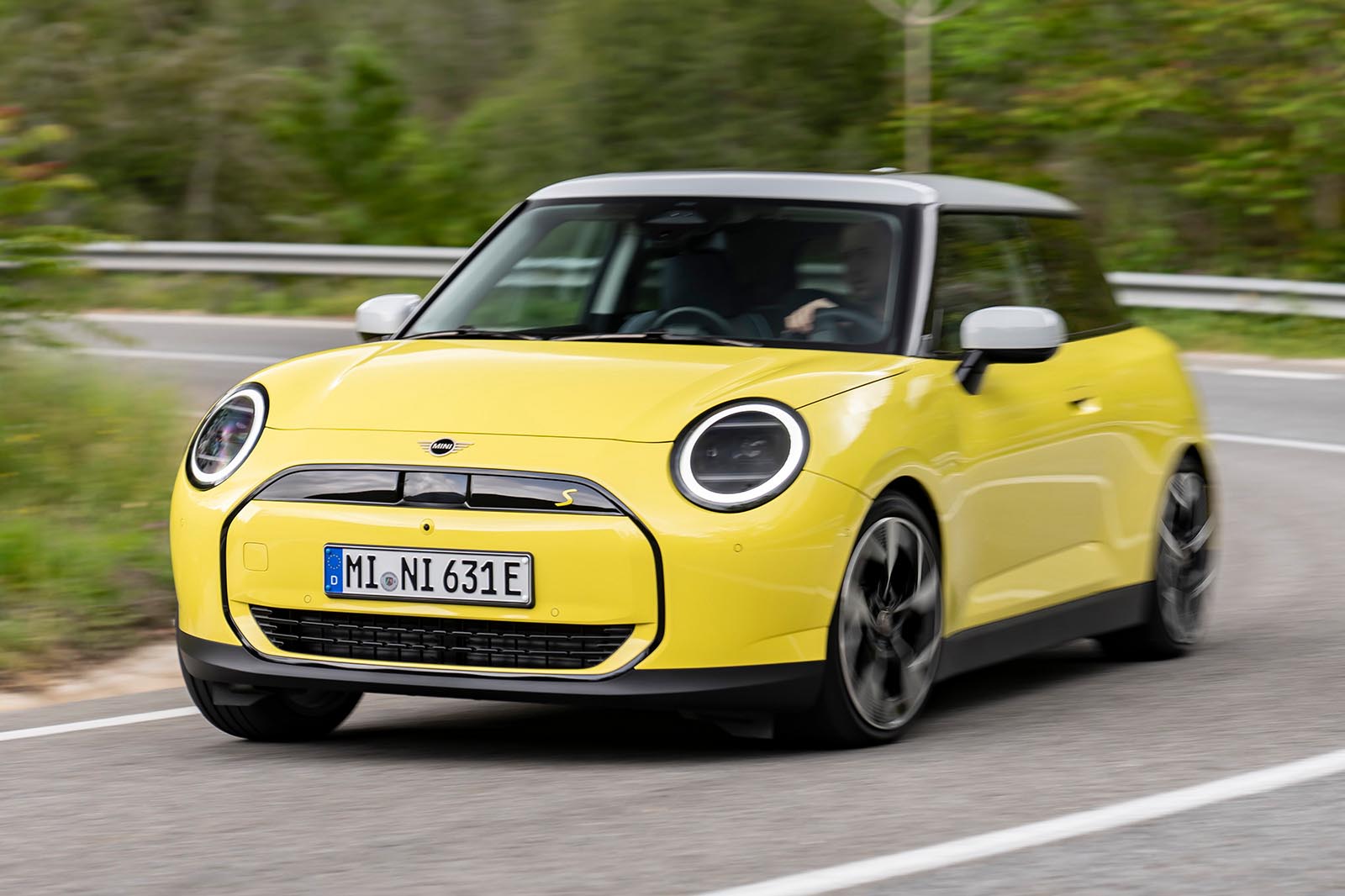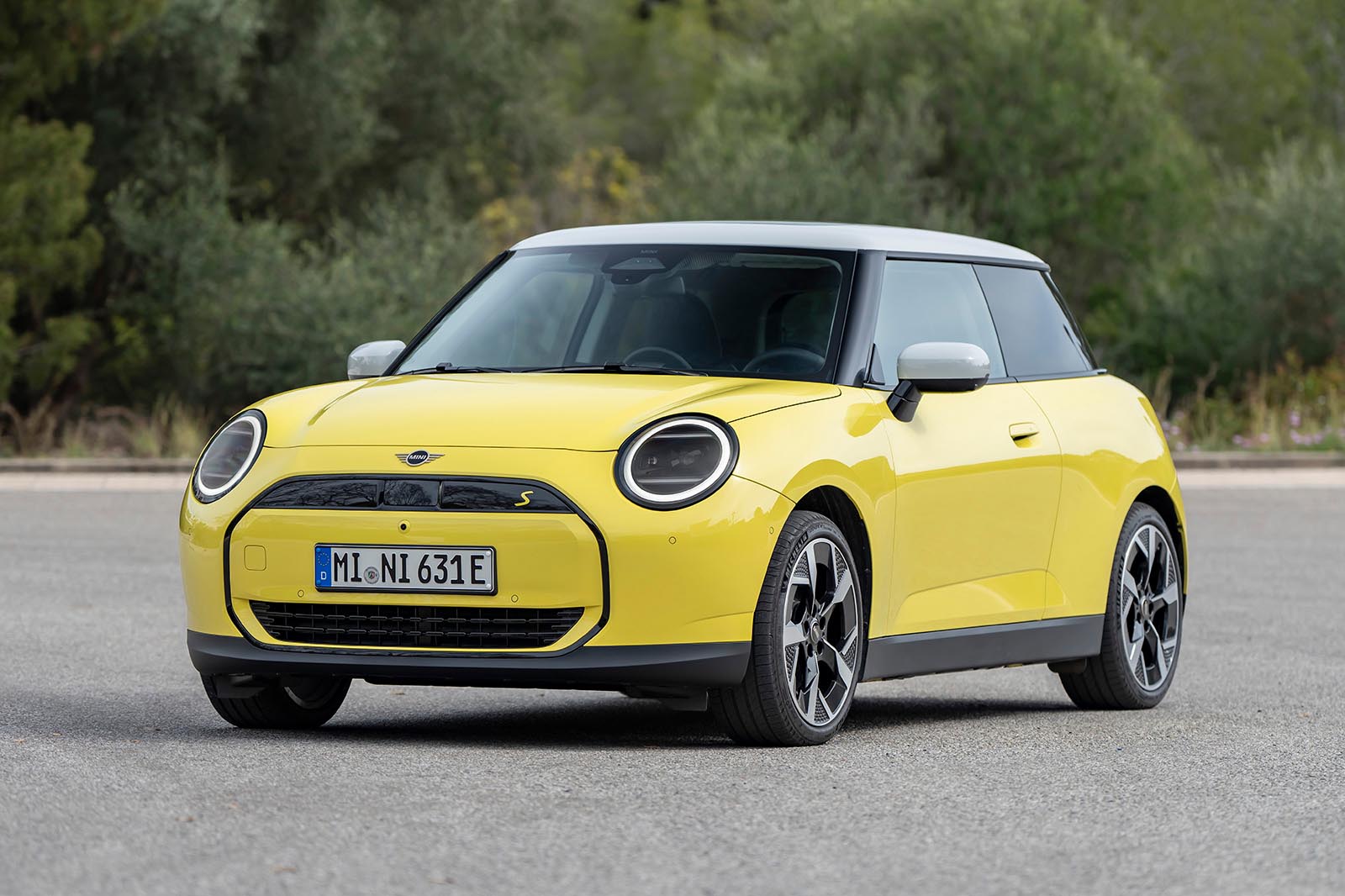The Mini Cooper, then, comes as a Cooper C or -S (built at Mini Plant Oxford, and powered by combustion engines) or as a Cooper E or SE (built in China, at BMW Group’s joint venture Spotlight factory, with the help of Great Wall Motors). UK first drives in the former should come soon - but for the latter, Mini laid on a pan-European press launch event in Barcelona last week, with right-hand drive UK examples arriving in summer 2024.
This time, there are two electric Minis, then - and, critically, both offer bigger drive batteries and more electric range than the famously nippy-but-short-legged outgoing Mini Electric. The Cooper E gets a new nickel-manganese-cobalt drive battery with 36.6kWh of usable capacity, up from 28.9- in the outgoing car - and a WLTP Combined electric range of 190 miles (up from 140-) - with prices starting from just under £30,000. That’s Mini delivering a 36 per cent boost on usable range, and keeping peak power the same as the old car, for broadly the same value for money. Not bad.
But if you want more of any of the above, the new Cooper SE now goes that little bit further. Here, usable battery capacity climbs to 49.2kWh; electric motor power to 215bhp; WLTP Combined range to 249 miles; and the departure-point price to £34,500. There were only Cooper SEs to test in Barcelona, so that’s the model we’ll focus on here - but Mini expects most Cooper electric buyers to plump for the SE in any case.
And design-wise? Well, Mini has treated the design of its three-door, heartland-territory ‘icon’ model rather carefully since it first appeared in 2001 - but this fourth-generation car is a bolder move. In pursuit of a cleaner- and more upmarket look, it has taken away much of the old car’s brightwork, and a few of its trademark design details.
There are no cutsie foglamps, front wing badges, plastic wheelarch extensions or chunky chrome doorhandles on the new car. There’s a much more restrained front grille; and the wraparound clamshell bonnet - which so famously helped to define the look of the 2001 BMW Group modern Mini, and through which the headlights of subsequent generations have cheekily poked - has gone, too. The designers wanted a sleek ‘pebble-like’ look for the new car, they say; but to these eyes, the effect is slightly less charismatic and endearing on the eye than we’ve become used to from Mini. Neater, perhaps - but a little bit less distinctive and more generic.
